Abydos was an important necropolis and cult center from before the pre-dynastic period until the advent of Christianity in Roman times, a period of some 3500 years. Kings of the first and second dynasties (3000-2686 BCE) were buried there, the last being Khasekhemwy, whose large mud-brick tomb is still being excavated. After Khasekhemwy royal burials at Abydos ceased; the necropolis of the 3rd dynasty (e.g. Djoser) became Saqqara. Burials of another kind, however, not only continued but multiplied: cenotaphs, "false tombs" that functioned as real tombs relative to the cult of Osiris. See the note on the Osireion below.
Monuments of the 19th dynasty (New Kingdom), particularly of Seti I and his son Ramesses II, today are the most visible to the non-specialist visitor. And they are spectacular, indeed.
The present façade of the Temple of Seti I was once the backdrop to the second of two courtyards, the first of which, along with its entrance pylon, has long since fallen into ruin. This 12-columned portico forms the entrance to the first hypostyle hall, which contained seven doors that led, through a second hypostyle hall, to seven chapels dedicated to the deified Seti I, Ptah, Re-Horakhty, Amun, Osiris, Isis, and Horus. When Ramesses II added the now destroyed first courtyard, he closed most of these doors, which interrupted the smooth flow into the seven chapels, making the second hypostyle hall the entrance hall for the chapels.
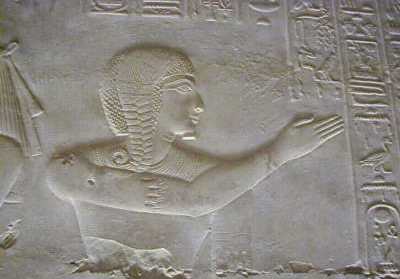 | 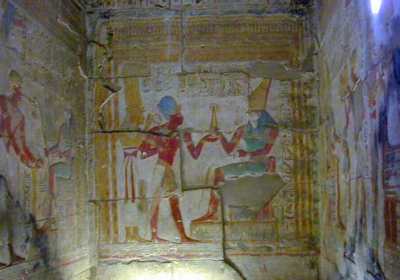
|
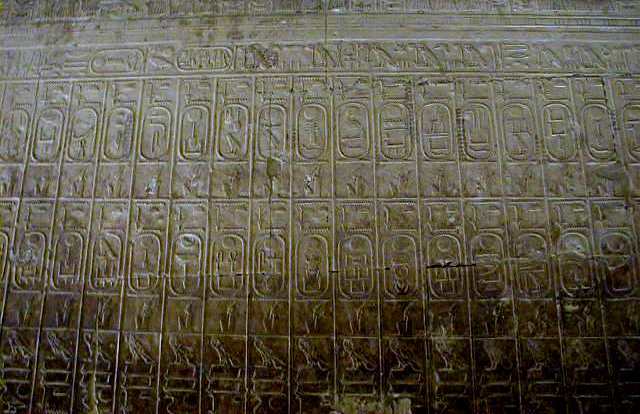 | Of particular interest to historians is the famous king-list. The list starts with the traditional founder of the 1st dynasty, Menes (Narmer) and ends, naturally, with Seti. But the names it omits are as important as those it names. Missing entirely are the kings of the Amarna period (Akhenaten, Smenkhare, Tutankhamun, Ay), making it one of the earliest recorded evidences that Akhenaten's "reform" was eradicated from the official record. |
| Directly behind the Temple of Seti I is the so-called Osireion, a cenotaph that was begun by Seti but mostly decorated by Merenptah, son of Ramesses II and Seti's grandson. Built in the form of a royal 19th dynasty tomb, it is what we might call the "spiritual tomb" both of Seti I (who is actually buried in the Valley of the Kings at Thebes) and of Osiris (the ruler of the nether world) or, perhaps better, of Seti as Osiris. At the heart of the structure was a cenotaph sarcophagus and canopic chest that stood on a granite "island" surrounded by ground water (as it is today), representing the primordial mound that rose from the waters of creation. | 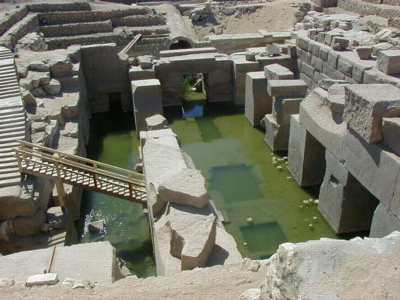 |
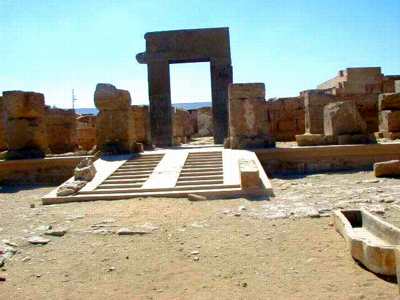 |  |
A short walk past the Osireion is the ruined cenotaph Temple of Ramesses II that parallels Ramesses' "real" mortuary temple, the Ramesseum, at Thebes. The reason for the cenotaph was its proximity to the traditional tomb of Osiris. And for this reason many cenotaphs, large and small, are found at Abydos.
Despite the loss of its roof and the general ruined condition of this temple, much of the decoration has survived in remarkable condition, with color virtually intact.